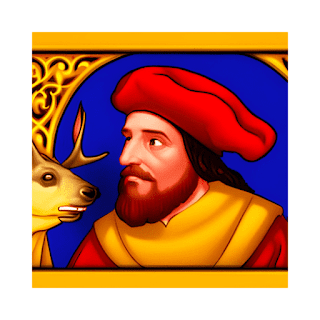Exploring the Middle Ages: Uncovering the Evolution of Middle English Literature and Language
Introduction to the Middle Ages
The Middle Ages, also known as the medieval period, is a significant era in the history of England that spanned from the 5th to the 15th century. During this period, the English language underwent a significant evolution, from Old English to Middle English, and literature played a crucial role in shaping and documenting this transformation. In this article, we will explore the evolution of Middle English literature and language, focusing on the works of Chaucer, the Canterbury Tales, and other significant literary works of the era.
The Evolution of the English Language
The English language evolved significantly during the Middle Ages. Old English, also known as Anglo-Saxon, was the dominant language in England until the 11th century when the Normans invaded and brought the French language with them. This led to a period of transition known as the Middle English period, which lasted until the 15th century. During this period, the English language underwent significant changes in pronunciation, grammar, and vocabulary, leading to the emergence of Middle English.
Middle English Language
Middle English was a transitional stage between Old English and Modern English, with many characteristics of both languages. The grammar of Middle English was similar to that of Old English, with inflections and noun cases, but it also had many elements of Modern English grammar, such as the use of prepositions instead of noun cases. The vocabulary of Middle English was influenced by both Old English and French, with many words borrowed from both languages.
Middle English Literature
Middle English literature was diverse and varied, reflecting the changing times and the evolution of the English language. The literature of this period was predominantly religious, and many of the works were written in Latin. However, there were also secular works written in Middle English that explored themes of chivalry, romance, and adventure.
Chaucer and the Canterbury Tales
One of the most significant figures in Middle English literature was Geoffrey Chaucer, who lived in the 14th century. Chaucer was a poet and author who wrote many works in Middle English, including the Canterbury Tales, which is considered one of the most important works of literature in English history.
The Canterbury Tales is a collection of stories told by a group of pilgrims on their way to the shrine of Thomas Becket in Canterbury. The tales cover a wide range of topics, from romance and adventure to morality and religion. The characters in the tales represent various social classes, providing a fascinating insight into the social structure of medieval England.
The Influence of Chaucer
Chaucer's influence on English literature cannot be overstated. He was a master of the Middle English language and helped to shape and document its evolution. His works, including the Canterbury Tales, were instrumental in popularising the use of English in literature, which had previously been dominated by Latin and French.
Other Significant Works of Middle English Literature
Aside from the Canterbury Tales, there were many other significant works of Middle English literature during this period. These include:
- Sir Gawain and the Green Knight: This poem is an example of Middle English alliterative verse and tells the story of Sir Gawain, a knight of King Arthur's court, and his encounter with the Green Knight.
- The Pearl: This poem is an allegory of the Christian afterlife and explores themes of redemption and salvation.
- The Vision of Piers Plowman: This poem is an allegory of Christian life and provides a critique of medieval society and its values.
The Peasant's Revolt
In 1381, a group of peasants in England launched a revolt against the ruling class. The uprising, known as the Peasant's Revolt, was one of the most significant social movements of the Middle Ages. It was sparked by a series of events that took place during the reign of King Richard II.
One of the key events that led to the revolt was the introduction of a poll tax. The tax was designed to help fund the war with France, but it was deeply unpopular with the peasants, who felt that they were being unfairly targeted. The tax was particularly unpopular in the southeast of England, where many of the wealthiest landowners lived.
In May 1381, a group of rebels led by a man named Wat Tyler marched on London. They were joined by thousands of other peasants from across the country, and their numbers swelled to over 50,000. The rebels demanded an end to the poll tax and the abolition of serfdom.
When the rebels arrived in London, they set fire to buildings and attacked the homes of wealthy landowners. The king, Richard II, was only 14 years old at the time, and his advisers were unable to control the situation. The rebels managed to gain access to the Tower of London and execute the Archbishop of Canterbury, who they saw as a symbol of the ruling class.
The king eventually agreed to meet with the rebels, and a meeting was arranged at Smithfield outside the city walls. It was here that Wat Tyler was killed, allegedly by one of the king's men. With their leader dead, the rebel movement began to lose momentum, and the revolt was eventually suppressed.
Despite its ultimate failure, the Peasant's Revolt had a significant impact on English society. It showed that the ruling class could not ignore the demands of the lower classes forever. In the aftermath of the revolt, some landowners began to grant more freedoms to their serfs, and there was a general sense that the feudal system needed to be reformed.
The Black Death
The Black Death, also known as the Bubonic Plague, was one of the deadliest pandemics in human history. It arrived in Europe in the mid-14th century and quickly spread across the continent, killing millions of people.
The disease was caused by a bacterium called Yersinia pestis, which was spread by fleas that lived on rats. It was highly contagious and could be transmitted through the air or by contact with infected animals or people.
The Black Death had a profound impact on English society. It killed around a third of the population, leading to a shortage of labour and a rise in wages. Many peasants began to demand higher pay and greater freedom, and some landowners were forced to grant these demands in order to keep their farms running.
The disease also had an impact on art and literature. Many of the works produced during this period reflected the horror and despair that people felt in the face of the epidemic. Some of the most famous examples of this include Geoffrey Chaucer's "The Canterbury Tales" and William Langland's "Piers Plowman".
The Hundred Years' War
The Hundred Years' War was a series of conflicts between England and France that lasted from 1337 to 1453. The war was fought over a number of issues, including territorial disputes and dynastic claims to the French throne.
The war had a significant impact on English society. It drained the country's resources and led to a rise in taxes. It also resulted in the loss of much of England's territory in France, including the important port of Calais.
The war also had an impact on art and literature. Many of the works produced during this period reflected the sense of national pride and patriotism that was felt by many English
Development of Middle English
The period of Middle English saw significant changes in the language, especially in terms of grammar and vocabulary. The most significant development was the loss of the Old English inflectional system, which was gradually replaced by a more analytical system that relied heavily on word order and prepositions.
The Norman Conquest of England in 1066 brought about significant changes to the English language. The Normans, who spoke a variety of Old French known as Anglo-Norman, brought with them their language, which was heavily influenced by Latin. Over time, the Anglo-Norman language and the Old English language began to merge, resulting in a new language known as Middle English.
Middle English Literature
Middle English literature refers to the body of literature written in Middle English between the 12th and 15th centuries. The period is characterized by a wide variety of genres and forms, including romance, allegory, fabliau, saint's lives, and morality plays.
One of the most significant works of Middle English literature is Geoffrey Chaucer's The Canterbury Tales. This work consists of a series of stories told by a group of pilgrims on their way to Canterbury. The stories range from bawdy and comical to moralistic and reflective, and provide a fascinating insight into the social and cultural values of the time.
Another significant work of Middle English literature is Sir Gawain and the Green Knight. This is an epic poem that tells the story of Sir Gawain, a knight of King Arthur's court, who accepts a challenge from the Green Knight to strike him with an axe, provided that he can return the blow a year later.
Other notable works of Middle English literature include William Langland's Piers Plowman, a religious allegory that provides a scathing critique of contemporary society, and the Pearl Poet's Sir Orfeo, a retelling of the Greek myth of Orpheus and Eurydice.
Conclusion
In conclusion, the period of Middle English was a significant time in the development of the English language and literature. The loss of the Old English inflectional system and the merging of Anglo-Norman and Old English resulted in a new language that was more analytical and sophisticated.
The literature of this period is characterized by its diversity and range, from bawdy and comical to moralistic and reflective. The Canterbury Tales, Sir Gawain and the Green Knight, Piers Plowman, and Sir Orfeo are just a few examples of the wealth of literature produced during this time.
Overall, the period of Middle English is an essential period in the history of English literature, and its legacy can still be felt today.

